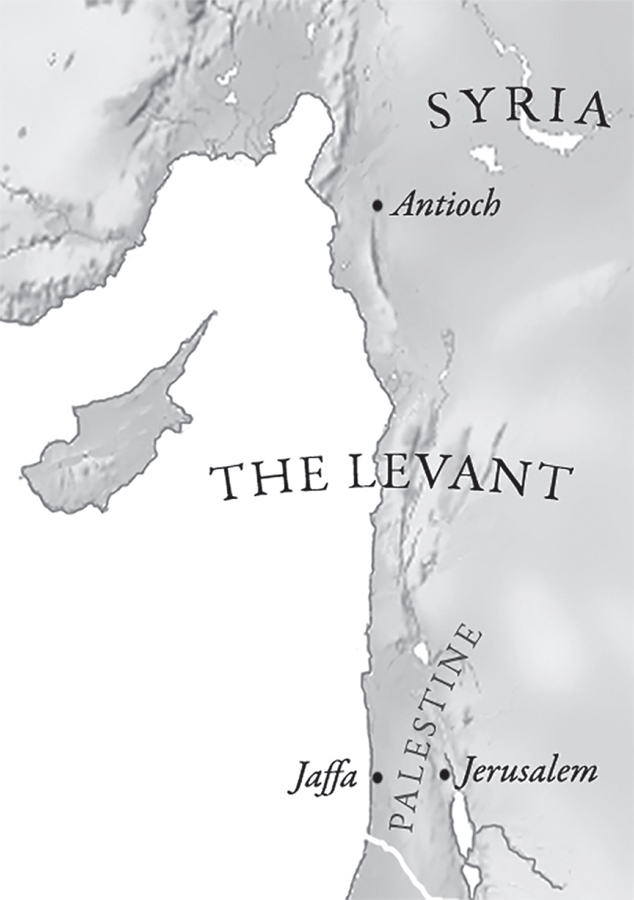5
1098. ON THE DESERT ROAD NEAR ANTIOCH . . .
In the distance they resembled blackened matchsticks shimmering in the heat rising off the arid plains of the Levant. By the time the crusading knights caught up with them in Syria, the remnants of the People’s Crusade numbered less than ten percent of the original desperate souls who had ventured out from the Frankish kingdoms.
The stories were gruesome. Priests traveling among them provoked the pilgrims by suggesting the Turks swallowed their valuables so as to conceal them from robbers, so whenever they captured one, the pilgrims cut open his belly and eager fingers probed among bloody intestines for hidden treasure.
The pilgrims were butchered in turn by the equally barbaric Turks. Those captured alive were placed in town squares and used for target practice by archers. Those who survived were returned to the desert, where they resorted on occasion to drinking their own urine. Or starved to death.
As for Peter the Hermit, his zeal had finally been foreshortened by the Turks, who tortured him. Godefroi de Bouillon was pleased enough just to find him still alive. The knight dismounted his horse, hugged the emaciated evangelist like a long-lost friend, and had him nursed back to some sort of health.

During his convalescence Peter recounted in lurid detail “how the people, who had preceded them under his guidance, had shown themselves destitute of intelligence, improvident, and unmanageable at the same time; and so it was far more by their own fault than by the deed of any other that they had succumbed to the weight of their calamities.”1 His vigor renewed, the monk continued the journey with Godefroi’s army on the remaining miles of dirt, sand, and rock still standing between them and Jerusalem.
That Godefroi himself appears to have marched to the Holy Land with his own objective right from the start was evident in his engagements with the Turks, for although his role in the army was important, his involvement in the battles and skirmishes in the Levant was minor. And battles there were aplenty.

The remnants of the People’s Crusade.
Writing to his wife in France, the knight Étienne Henri de Blois was hopeful that the remaining three hundred miles to Jerusalem would take a mere five weeks to cover.2 In reality it took the Crusaders two years before they finally caught a glimpse of the city they had so persevered to reach.